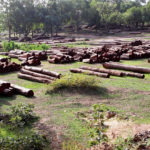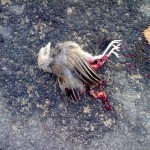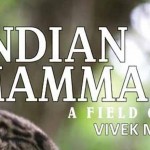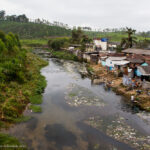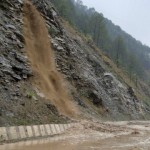IndiaWilds Newsletter Vol. 7 Issue I
ISSN – 2394 – 6946
Tiger Census: Past & Present
Is there a design behind this good news?
The MoEF has announced a massive 30% increase in tiger population in India. This kind of increase has never been seen since the estimation of Indias tiger population started several decades ago. Initially, the estimation of tiger numbers in India was based on numbers thrown around by a few experts over cocktails. Those numbers of 100,000 and 40,000 have stayed with us ever since. It would be pertinent to mention that when a number is quoted again and again, it gains sanctity and is believed to be true.
E.P. Gee a celebrated naturalist and wildlife photographer had said that there were some 40,000 tigers at the beginning of the 1900s and 4000 in 1964. Shri Kailash Sankhala writes in his book Tiger! The story of the Indian Tiger that when he questioned E. P. Gee about his estimates of tiger population in India, E. P. Gee replied: Some estimate is better than non, and it should hold good until it is improved.
Prater had compiled a list of 540 tigers shot in 1938 (BNHS). In 1967 Sankhala has written based on perusal of hunting records 1730 permits were issued in the year and only 159 tigers were shot throughout the country, a success of only about 10% compared with almost 100% in the nineteenth century. Sankhala estimated 2500 tigers in India in 1969 and within six months the Government moved in to ban tiger hunting. Sankhala admits that that though his estimates were based on second hand information, it was from his forest department colleagues so had bit of sanctity.
After thee initial estimations by experts were done, a little bit more care was taken to estimate the tiger numbers. In 1972, a tiger estimation operation termed as tiger census based on pugmarks was conducted in April and May and the estimated number was 1863.

Tiger pugs
Later on these estimations based on pugmark method was further refined to include simultaneous estimations in various protected areas. With the inability of people to differentiate the pugmarks of individual tigers, the estimations were off the mark. Several enterprising protected area managers started using this loophole and inflated the tiger numbers in their areas as tiger being the apex predator, its population in a particular area reflected the well being of the forest. So many Field directors/DFOs and other officials used these numbers to claim their efficiency and in some cases were even rewarded with career advancements.
Various facilities as well as fund allocation were also demanded to protect these tigers. Several National Parks like Sariska and Panna saw decimation of all their tigers, but the tiger reserve authorities were in denial mode. There were also disappearance of tigers in other well known places like Ranthambhore.
The camera trap method disrupted this misrepresentation of tiger numbers and brought some sanctity to the tiger number claims.
Scientifically, despite the increased usage of camera traps, the term tiger census continues to remain a misnomer at best as this exercise is an estimation and not counting of individual tigers. One can argue for increased usage of camera traps in all the tiger reserves and wilderness areas to document all the tigers. However, limitations of resources like remote cameras, trained manpower, funds remains a bottleneck. Remote cameras have also malfunctioned and some have been stolen by poachers to obliterate their record of crime.
The camera traps are placed based on a sampling plan and the extrapolation of these results can give us a better estimation of tiger numbers. The capture and recapture technique by camera traps have helped in establishing fool proof record of individual tigers in places. Since tigers move from one area to another, matching their stripes helps in eliminating an individual tiger to be counted several times.

Unfortunately, the technique of estimating tiger numbers need to be scientifically robust and more importantly consistent over a period of time to be of any use for conservation.
In the latest tiger census, the double sampling method which uses data acquired from ground based surveys as well as camera traps is utilised and is described as weak and inadequate by Dr Ullas Karanth.
The double sampling method is not the best currently available methodology for this task. We do not believe this method can yield sufficiently refined results to accurately measure changes in tiger numbers at landscape or country-wide scales as is being attempted.
When there is no consistency in the approach to estimate tiger numbers, the results stare at us as if it is in vacuum as we cannot attribute any meaning to those numbers. In the latest tiger census, there were 1540 unique tiger captures based on camera traps. However, we dont know if the number of camera traps were more this time and if the increase is because of the increase in coverage of areas by camera traps and physical counting. We also dont know the impact of change in census techniques on the tiger numbers this year.
This is akin to a teacher changing the methodology in a particular year to grant pass marks to one batch of students where his son is studying. This may suit the present Government, which would be happy if the tiger numbers are high, as the 30% increase would come in handy as a good excuse to open up large tracts of forests for exploitation by industries.
Sometime back the NTCA (National Tiger Conservation Authority) had even talked about creating individual tiger id cards. The id card conveyed a ludicrous vision of something hanging from the neck of the tiger and was thoroughly ridiculed. However, tiger scats, hair etc can be collected to create database of tigers in each forest. This will also help match with the confiscated tiger parts and establish the tiger part to a particular individual tiger. This will also help in prosecution of poachers. The labs can be opened up in various regions for faster analysis and the results can be compiled into a master database and made available for independent analysis.
Mere counting doesnt result in increase in numbers. Else, people would have just sat at home counting their money every day. With the euphoria generated by the news of staggering increase in tiger numbers as a result of this double sampling methodology, the ills afflicting our wilderness areas are forgotten.
According to WPSI (Wildlife Protection Society of India) database, in 2014, 81 tigers had died out of which poaching and seizures contributed to 23 of those ie. about 28%. In 2015 even before we complete the first month of the year, there have been 11 tiger deaths out of which 4 are due to poaching and seizures ie about 36%. Clearly it is some food for thought for the Government celebrating the tiger numbers.
The tiger numbers in places like Odisha have come down drastically. Despite denials poaching of prey continues. There was a time when large herds of herbivores were common in the forests of Odisha. Today, in places like Satkosia Tiger Reserve and Similipal, mere sighting of a spotted deer or sambar is a big thing. There are reports from villages in and around Satkosia about sale of Sambar and cheetal meat. This situation is true in many of our tiger reserves. In such a situation, how can you expect to sight large number of tigers?
The field staff whom I had interviewed in Similipal Tiger Reserve had told me that poaching is rampant. They are demoralized because the poachers get bail soon. With only a stick the field staff cannot catch the poachers who have guns and knives and dogs apart from superiority in numbers. Unless our frontline staff are young, motivated, adequately armed and empowered, we cant win the battle to save our wildlife from poachers and trees from woodcutters.
Indias forests are increasingly being opened up for exploitation by mine owners and industries. The Government has brought in an ex-cabinet secretary TSR Subramanian to create a report to modify wildlife laws to allow unhindered decimation of Indias wilderness areas for industries. This 30% increase in tiger numbers can only be welcomed by industrial lobby and their cohorts who will use this as an alibi for sacrificing our forests for development.
Certainly alls not well in Tiger land.
Interview of Prof. Ratan Lal Brahmachary
by Shubhobroto Ghosh
Professor Ratan Lal Brahmachary, former researcher, Indian Statistical Institute (Calcutta), worked mostly on biochemical embryology of molluscs and chemical communication in big cats, the latter for 50 years now. An ardent wildlife and nature enthusiast, he has visited Africa fourteen times and also gained experience in the Amazon area, Borneo, Andaman and in marine laboratories in Italy and France. His tiger research was initiated in 1964 when he was with the famous pioneer George Schaller in Kanha. He conducted research at George Adamsons lion camp at Kora, Kenya, helped also by conservationists like Tony Fitzjohn and Gareth Patterson. Professor Brahmachary has written numerous scientific papers and also a few popular books (in Bengali) outlining his travails through the wondrous world of animals. Together with his student and colleague, Dr Mousumi Poddar Sarkar, he has contributed a chapter to the just published Neurobiology of Chemical Communication brought out by Taylor and Francis and edited by Carla Mucignat Caretta, a compendium of research work carried out in this field.
Q: SG : What is the significance of the newly published book, The Neurobiology of Chemical Communication (Editor Carla Mucignat Caretta, Taylor and Francis, 2014) and your contribution to it?
A: RLB: This book is a compendium of research done all over the world on pheromones and chemical communication. Specialists have contributed different chapters on pheromones and chemical communication in insects and vertebrates.
My contribution is a summary of fifty years of research together with various colleagues on pheromones on tigers and other big cats initiated in 1964 when George Schaller and I were watching a herd of Axis Deer in Kanha National Park.
Q: SG : What are the modern trends in pheromone research in India?
A: RLB: Archunan of Bharathidasan University has done good work on cattle pheromones as described by him in the 2014 book of Taylor and Francis on neurobiology of chemical communication. Dominic in Benaras Hindu University and Alexander in Chennai did some good work on pheromones in rodents, some years ago.
I do not know about research that has taken place in the insect world regarding pheromones in India. Although India is rich in biodiversity and offers a vast scope of research, this branch of science is also becoming highly sophisticated requiring very expensive modern apparatus. This puts us at a disadvantage…
(Please download the Newsletter PDF for the detailed interview)
IndiaWilds App for Android Mobile
In India most of the internet penetration is happening through mobile phones. And the existing users who have access to desktops and laptops are becoming much more mobile then they used to be a few years ago. So to raise awareness and reach out to more people we need to adapt ourselves and make IndiaWilds easily accessed through a mobile phone using android OS.
Today, I am pleased to announce that we have created a mobile phone app so that people can access IndiaWilds anytime, anywhere without being tied to a computer. No need to type. One can access at the click of a button.
We have developed this app through Business Compass LLC a company based in Randolph, New Jersey, United States so that we create a good app.
Awareness is the first step before a person can become a champion of wildlife. I hope this will help us in reaching out to more people to raise awareness and make a real impact on the conservation landscape. If you have an android device then please download the app from this link:
https://play.google.com/store/apps/details?id=com.businesscompassllc.indiawilds
Book Review
THIRTEEN YEARS AMONG THE WILD BEASTS OF INDIA: By George P. Sanderson
The review of the book “THIRTEEN YEARS AMONG THE WILD BEASTS OF INDIA: By George P. Sanderson” can be found in this link:
http://www.indiawilds.com/diary/thirteen-years-among-the-wild-beasts-of-india-by-george-p-sanderson/

THIRTEEN YEARS AMONG THE WILD BEASTS OF INDIA: By George P. Sanderson
Conservation News:
Dedicated Freight Corridor dissects Balaram Sanctuary
The NBWL (National Board for Wildlife) has cleared a proposal to dissect the Balaram Sanctuary by laying double railway tracks for the Dedicated Freight Corridor (DFC). The Balaram Sanctuary has sloth bear and leopard populations and their habitat will be fragmented and many of them are likely to be killed when this Dedicated Freight corridor connecting Delhi to Mumbai becomes operational.
The NBWL has said that the state forest department should ensure that there are underpasses for the movement of wildlife. Easier said than done, the underpasses unless designed scientifically, will not be used by the wildlife. Gujarat has only 293 sloth bears and a majority of those are concentrated in Balaram and Jessore sanctuaries.
The dedicated freight corridor is a lot different from the regular single tracks and will have a heavy freight traffic. This will result in permanently fragmenting the habitat and any wildlife trying to cross it would be at a risk of being killed.
http://www.indi
Indo- German Working Groups on Water Management & Circular Economy to be set up
The Minister for Environment, Forests and Climate Change, Shri Prakash Javadekar has said that Governments initiatives to tap cleaner sources of energy reflected Indias commitment to pursue and practice clean and sustainable development. As a fast developing economy, climate adaptation measures along with mitigation formed the defining factor in Indias approach towards development. He also emphasized the need to alter the energy mix in favour of renewable energy sources so that a balanced approach towards development and environment conservation could be evolved. Shri Javadekar stated this while giving a joint statement with Dr. Barbara Hendricks, Minister for Environment, Nature Conservation, Building and Nuclear Safety, of Germany here today.
Also speaking on the occasion, Dr. Barbara Hendricks has said that Indian and German governments held similar positions for the Post-2015 agenda on Climate Change. Both Countries needed sustainable development goals that address all three dimensions of sustainability economic, ecological and social aspects equally. Germany was ready to share with India its experience in adapting to sustainable development models, the German Minister said.
In a Bilateral Meeting held here, both the countries have decided to set up two Working Groups – One on Circular Economy and the other on Water Management. The Ministers stated that the focus of the working group would be restoration of water bodies, waste management, and more efficient use of water resources.
Both the Ministers emphasized that the UN Climate Summit in Lima had laid the foundations for negotiations on a new global climate agreement which would be adopted in the Climate Change Conference to be held in Paris later this year.
ISSN Number for IndiaWilds Newsletter
IndiaWilds Newsletter has been allotted ISSN number as a continuing resource (ISSN Number – 2394 – 6946). This will help in electronic archiving and act as a bibliographical tool for students, researchers and librarians can use it to give precise references ofserialpublications. For further details check:http://www.indiawilds.com/forums/showthread.php?16154-ISSN-Number-for-IndiaWilds-Newsletter
Equipment Discussions
Rodelink Wireless Filmmaker Kit
http://www.indiawilds.com/forums/showthread.php?16169-Rodelink-Wireless-Filmmaker-KIt
Sounds of Naure
Chilika Soundscape bySabyasachi Patra
http://www.indiawilds.com/forums/showthread.php?16171-Chilika-Soundscape&p=73542#post73542
Natural History
COUNTRY NOTEBOOK: M. Krishnan: THE Mongoose – Cobra FightBy Saktipada Panigrahi
http://www.indiawilds.com/forums/showthread.php?8852-Country-notebook-m-krishnan&p=73418#post73418
Wildlife Photography
Tiger Cubs byVipin Sharma
http://www.indiawilds.com/forums/showthread.php?16069-Ranthambore-Diary-June-13
RhinobyMrudul Godbole
http://www.indiawilds.com/forums/showthread.php?16052-Rhino
Jungle CatbyRajbir Oberoi
http://www.indiawilds.com/forums/showthread.php?16061-Jungle-Cat-Untold-Stories-of-Savana!
Whistling Teal byNishith Kumar
http://www.indiawilds.com/forums/showthread.php?16094-Whistling-Teal
Great Hornbill at Corbett byMurugan Anantharaman
http://www.indiawilds.com/forums/showthread.php?16044-Great-Hornbill-at-Corbett
Common Hawk Cuckoo by Mangru Minz
http://www.indiawilds.com/forums/showthread.php?16115-Common-hawk-Cuckoo
Himalayan Monal bySubhajit Chaudhuri
http://www.indiawilds.com/forums/showthread.php?16099-Himalayan-Monal
Where Rainbow meets the Earth by Bibhav Behera
http://www.indiawilds.com/forums/showthread.php?16116-Where-Rainbows-meet-the-Earth
A boatby Jitendra Katre
http://www.indiawilds.com/forums/showthread.php?16066-A-boat
Bark Mantis by Abhishek Jamalabad
http://www.indiawilds.com/forums/showthread.php?16105-Bark-Mantis-Portrait
Checkered Keelback by Abhirup Dutta Gupta
http://www.indiawilds.com/forums/showthread.php?16113-Checkred-keelback
Carpenter Bee byPrajwal Ullal
http://www.indiawilds.com/forums/showthread.php?16086-The-buzzing-carpenter-bee
I look forward to your inputs and support in preserving the last tracts of wilderness and wildlife left in our beautiful country. For other interesting articles and images check –http://www.indi
To post in the IndiaWilds forums, you can register free of cost using your Full Name as user id at
http://www.indiawilds.com/forums/register.php
If you are already a member of IndiaWilds and have forgotten your user id and/or password you can mail to
administrator@indiawilds.com
If you want to contribute original articles, or for any image enquiries please send a mail to
administrator@indiawilds.com
Regards,
Sabyasachi Patra
Profile:http://www.indiawilds.com/about.htm
Contact:http://www.indiawilds.com/contact_us.php
Facebook:http://www.facebook.com/pages/IndiaWilds/132629240481
Diary:http://www.indiawilds.com/diary/
Equipment reviews:http://www.indiawilds.com/diary/category/equipment/
Forums:http://www.indiawilds.com/forums/index.php
IndiaWilds Channel:http://www.youtube.com/indiawilds
Publisher’s address:
Plot No. 1, Akarpuri Colony,
Near Vaithal Temple, Old Town,
Bhbuaneshwar, 751002
Odisha
Mobile – +919910900446
Please post your views and feedback in the comments below.
- GoPro Hero 12 Black - 6 September,2023
- Leopards: The Last Stand - 2 July,2023
- Drifting in the Waters of Sundarbans - 26 March,2023



